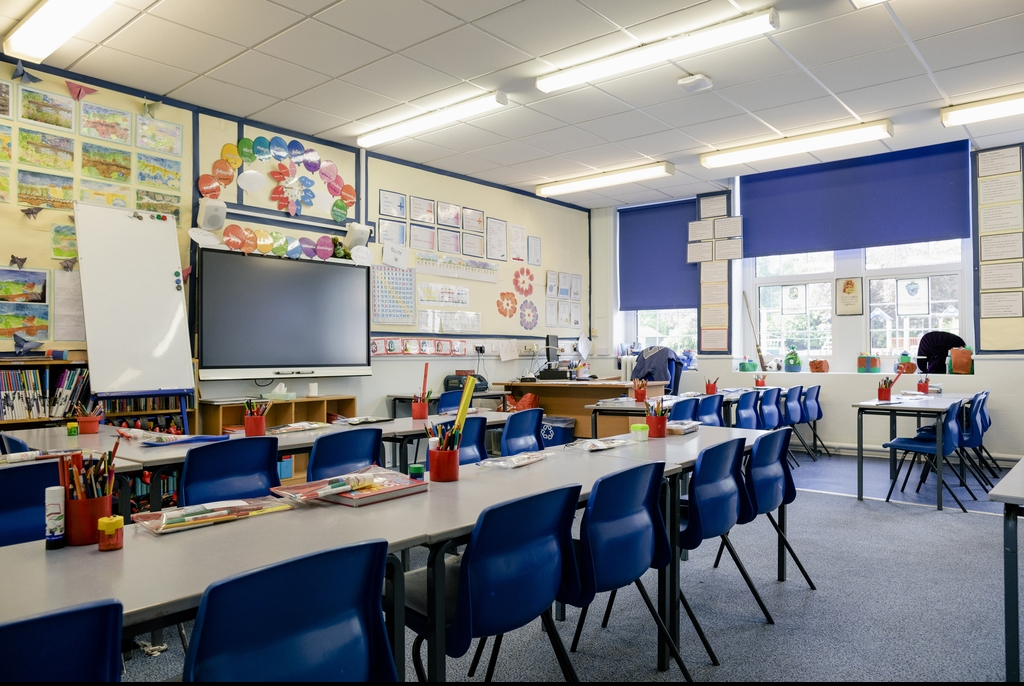In a recent viral video, a teacher in the UK sparked outrage among parents after explaining her reasons for not allowing students to use the restroom during class. The video, shared on TikTok, generated heated debate, with many parents expressing their anger and concern over the teacher’s strict policy. But is there a method behind the madness, or are students being unfairly deprived of a basic human need?

Some teachers were against letting kids go to the toilet. Credit: SolStock/Getty
In this article, we’ll explore the teacher’s reasoning, why parents are upset, and whether there’s a balance to be struck between classroom management and students’ well-being.
The Teacher’s Perspective: Classroom Focus Over Bathroom Breaks
During her lunch break, the teacher took to TikTok to address the complaints she frequently receives from parents about her bathroom policy. She started by acknowledging the frustration parents feel but also explained her stance, which stems from her commitment to maintaining classroom structure and ensuring that lessons run smoothly.
She provided a few examples of why she denied bathroom breaks during class. In one case, a student asked to leave during a paired reading activity. The teacher declined, noting that if one child left, the activity would lose its value for both partners. In another instance, she refused a bathroom request during a math lesson when she was in the middle of explaining a crucial concept, concerned that the student would miss important instructions and require additional explanation later.
From her viewpoint, these moments are critical for maintaining the flow of the lesson, and frequent interruptions would not only affect the individual student but also the class as a whole.
Timing Matters: Post-Break Requests Raise Red Flags
One of the teacher’s key frustrations was the timing of bathroom requests. She mentioned that students often ask to go to the restroom immediately after a break, a time when they should have used the facilities. She felt that allowing children to go to the bathroom as soon as the lesson begins disrupts the rhythm of the classroom and distracts others.
Her solution? Ask students to wait until a more appropriate time in the lesson. In her opinion, this approach encourages children to manage their time better and think ahead, rather than waiting until the middle of a critical activity to leave the room.
The Parents’ Outrage: Concerns Over Student Well-Being
Despite the teacher’s explanations, many parents were not convinced. The comment section of her post was flooded with criticism. Some parents argued that denying bathroom access could have serious implications for a child’s health and well-being. One parent pointed out that if a child is focused on needing to go to the bathroom, they’re unlikely to concentrate on the lesson anyway, defeating the purpose of keeping them in the classroom.
Other parents took issue with the teacher’s approach to managing bathroom requests at the start of class. “In university or the workplace, you don’t need to ask permission to use the bathroom,” one parent argued. “Why should school be different? What exactly are we preparing them for?”
@homelearninghaven If you want your child to receieve special treatment, mainstream state school probably isn’t the place to be sending them 😩 some parents really are setting their kids up for failure in real life with all this pampering and entitlement 🙄
♬ original sound – Home Learning Haven
Some even shared personal experiences of their children suffering from anxiety over asking to use the bathroom, with one parent stating their child had an accident at school because they were too afraid to ask. This raised the question: Are teachers inadvertently creating a climate of fear by denying students something as basic as using the restroom?
Teacher’s Response: A Balance Between Learning and Life Skills
The teacher, while acknowledging parents’ concerns, held firm in her belief that classroom management and discipline are crucial for effective learning. She emphasized that it’s not about depriving children of their rights, but rather about creating a structured environment where learning takes precedence.
In her view, part of a teacher’s job is to prepare students for the real world. As she put it in the caption of her video, “If you want your child to receive special treatment, mainstream state school probably isn’t the place to be sending them.” Her message seemed clear: life doesn’t always accommodate individual needs, and learning to wait or manage time is an important lesson in itself.
While this perspective may resonate with some educators, it’s clear from the reaction that many parents feel differently. For them, the potential consequences—anxiety, health issues, and even accidents—far outweigh the benefits of keeping a child in class for a few extra minutes.
The Bigger Issue: A Clash of Expectations
This incident highlights a broader issue in education: the often-competing expectations between parents and teachers. Parents naturally want what’s best for their child’s health and comfort, while teachers are focused on maintaining order and maximizing learning time. When these priorities clash, it can lead to frustration on both sides.

Have you ever been refused to go to the toilet? Credit: izusek/Getty
Is there a middle ground? Some suggest that allowing students a certain number of bathroom passes each term could offer a solution, giving children the autonomy to manage their own needs without causing frequent disruptions. Others argue for a more flexible approach, especially for younger students, who may not yet have the ability to regulate their bathroom habits effectively.
Striking a Balance: Can There Be a Compromise?
Ultimately, finding a balance between maintaining discipline in the classroom and addressing students’ basic needs requires understanding from both sides. Teachers need to recognize that denying bathroom access could lead to anxiety, embarrassment, and even physical discomfort. On the other hand, parents must understand the challenges of running a classroom where frequent interruptions can derail the learning process.
Clear communication between parents, teachers, and students is key. Rather than implementing a one-size-fits-all policy, perhaps a more flexible approach could address the needs of both the student and the teacher. Schools could explore the use of set bathroom breaks or allow for discretion in genuine cases of urgency.
Conclusion
The controversy surrounding bathroom use in the classroom has opened up a much-needed conversation about student welfare, classroom management, and the role of teachers in preparing children for life outside of school. While this teacher’s approach to restricting bathroom access sparked outrage, it also highlighted the complexities teachers face in balancing their students’ needs with the demands of teaching.
As this debate continues, the challenge remains to find a solution that ensures both the well-being of students and the effectiveness of the classroom environment. In the end, it’s all about finding a way to support the learning process without compromising on compassion and understanding.


